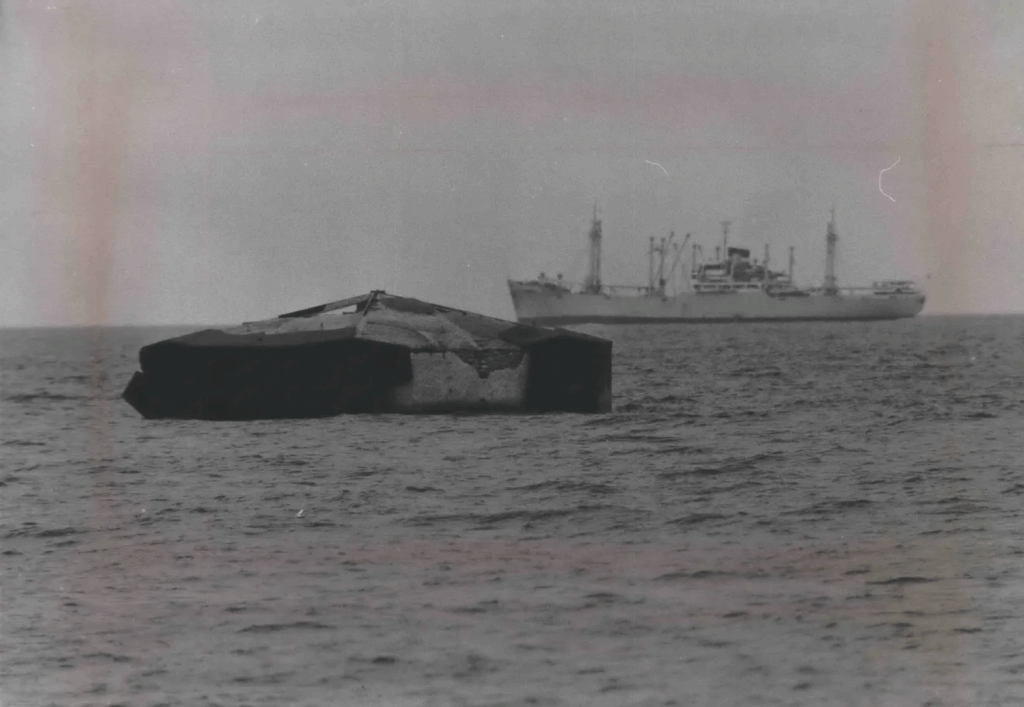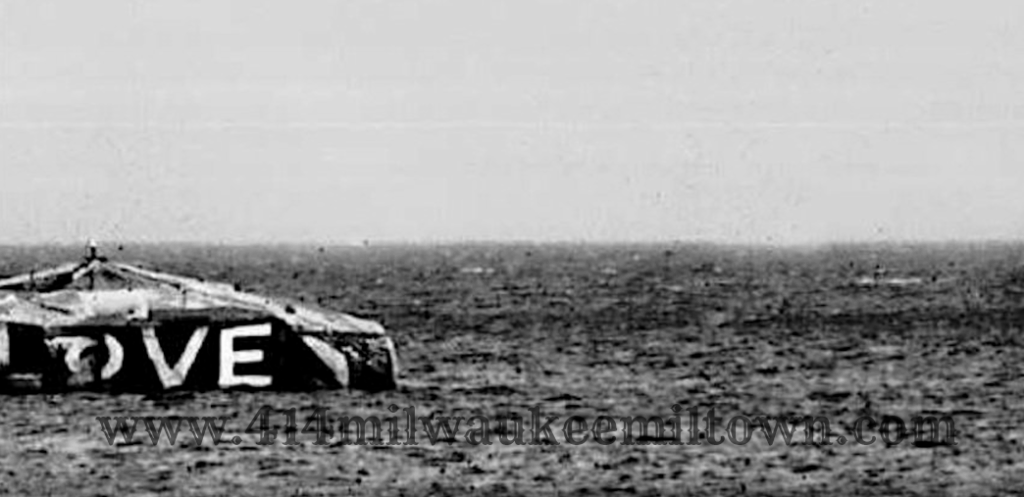
If you grew up in Milwaukee—or spent any time lounging on the shores of Bradford Beach—you may have heard whispers about something called the Love Rock. For some, it was just a painted structure floating in the distance. For others, it symbolized the spirit of a generation that dared to turn a forgotten relic into a symbol of peace, love, and remembrance.
But what was the Love Rock really? Where did it come from? And why is it still remembered decades after its disappearance?
Let’s dive into this iconic piece of Milwaukee history, from its tragic beginnings to its explosive end.

💔 Born From Tragedy: The North Point Water Intake Crib
Before it ever became a “Love Rock,” the structure in question was a vital part of Milwaukee’s infrastructure. Officially known as the North Point Water Intake Crib, it was built in the early 1890s about 3,000 feet offshore in Lake Michigan. This was no small project—this crib was designed to help deliver clean water from the lake to the growing city.
But construction wasn’t without tragedy.
In March 1893, a brutal spring storm rolled across the lake, hammering the structure. Inside, 15 workers had taken shelter. Only one man survived. The storm claimed the lives of 14 men, most of whom were immigrants just trying to make a living. Milwaukee mourned their loss, but the project continued.
The crib was completed later that year and remained in operation until 1938. After that, it just sat there—a rusting concrete cylinder rising about 15 feet above the water, slowly being forgotten by time… until the 1970s.

✌️ The Summer of ’71: Peace, Paint, and Rebellion
In 1971, three friends—Mike Manske, Dan Hoffman, and Mike Moser—decided to make their mark on the mysterious hunk of concrete bobbing on the horizon. Armed with brushes, paint, and a canoe, they paddled out and painted the word “LOVE” in massive white block letters across the lake-facing side of the structure.
They didn’t ask for permission. They didn’t have a grand plan. They just wanted to put something positive into the world.
But something about that act stuck.
Almost overnight, the Love Rock became a symbol of something deeper. It was a reminder that even cold concrete, built from tragedy, could be reclaimed as a message of hope. It spoke to the counterculture of the time—people seeking peace during a chaotic era of war, inequality, and protest.

🌊 A Symbol That Stood the Test of Time
For over a decade, the word LOVE greeted anyone walking the shores of Bradford Beach. Couples took engagement photos with it in the background. Artists painted it. Journalists wrote about it. And every now and then, a group of daring souls would paddle out to freshen up the paint.
Despite being illegal to graffiti public structures, the city didn’t rush to erase it. Maybe because they knew—deep down—it meant something to the people.
But nature, time, and bureaucracy don’t always honor symbols.

💥 The End of an Era
By the mid-1980s, the North Point Crib was falling apart. Engineers said it was unsafe. The city couldn’t justify maintaining an abandoned piece of infrastructure in the middle of the lake. So in September 1986, with little fanfare, the structure was destroyed using underwater explosives.
Just like that, the Love Rock was gone.
But not forgotten.

🕊️ A Legacy That Lives On
Today, Milwaukeeans still talk about the Love Rock. You’ll find mentions of it in art exhibits, history blogs, and even in local songs. For some, it’s a lost landmark. For others, it’s proof that beauty can bloom in unexpected places.
It was never just about the word “LOVE.” It was about what that word meant—community, creativity, and reclaiming something dark and turning it into light.
And that’s something worth remembering.

Crews begin to move into place for the demolition of the North Point water intake crib, a concrete structure in Lake Michigan off Milwaukee’s Bradford Beach, on Sept. 8, 1986. For 15 years, the structure, built in the 1890s, was known as the “Love Rock.”
Have your own memories of the Love Rock or Bradford Beach in the ’70s and ’80s? Drop them in the comments or tag us in your throwback photos. Let’s keep Milwaukee history alive. ✨

